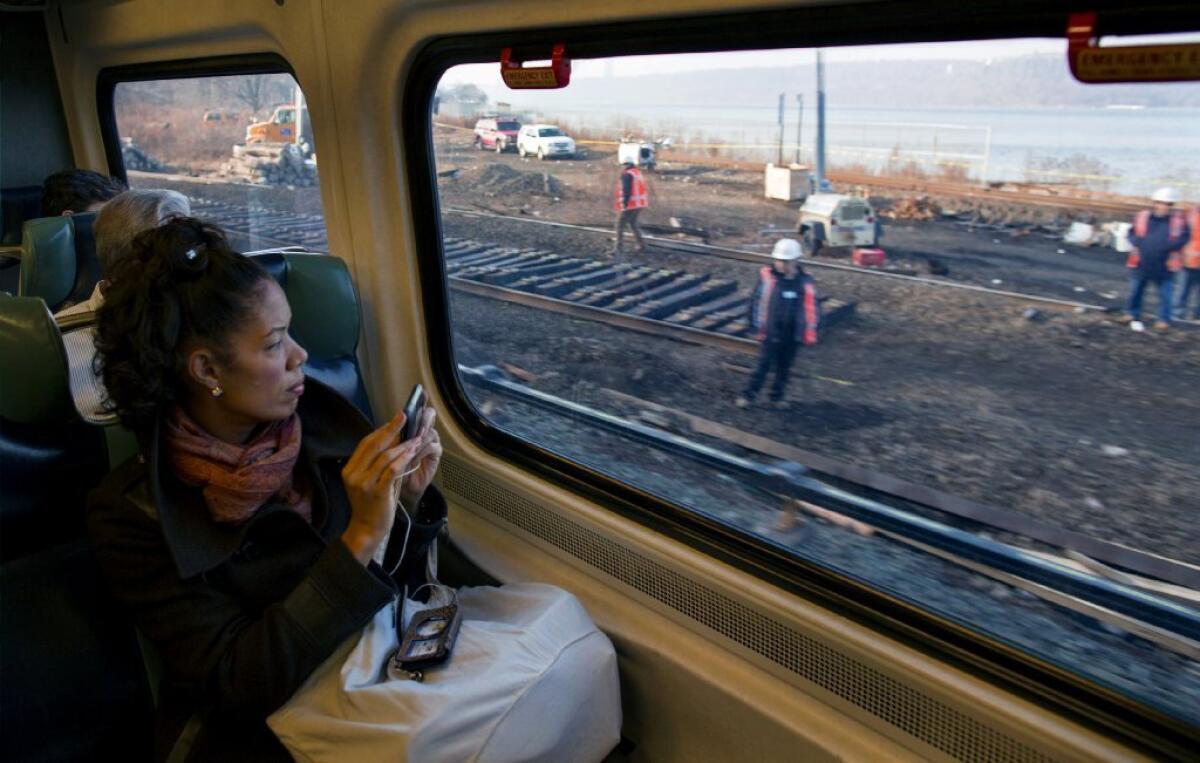Letters: Rail safety? Simple.

Re “Train crash ‘preventable,’ senator says,” Dec. 6
Reporting on last week’s train derailment in New York, the article says, “Officials have said that [engineer] William Rockefeller apparently went into a daze shortly before the train sped into a 30-mph curve in the Bronx at 82 miles per hour and tumbled from the tracks.”
The word “daze” could mean napping, dozing off or perhaps just staring into space, and “apparently” denotes that no one else was in the train cabin to really know what took place.
Commercial planes have a pilot, co-pilot and possibly even relief pilots. Why shouldn’t there be a second person in the train cab with the main operator?
I don’t know much about running trains, but it seems like a no-brainer to put two people in the cab as a way to reduce the likelihood of someone napping or using a cellphone while operating a train.
Bill Spitalnick
Newport Beach
While Sen. Dianne Feinstein (D-Calif.) calls for installation of new technology known as “positive train control,” the fact is that railroad signaling equipment that most likely would have prevented the New York derailment has existed for many years.
Approach control at junctions uses electronic circuits in the track to prevent a signal turning green until a train’s speed has been reduced to the line limit. If a train passes the red signal, automatic train stop (ATS) applies the brakes.
These systems date back to the late 1800s and, in modern form, provide protection to train passengers around the world.
Approach control adds a few minutes to the running time of a train, which may explain why it was not in use in New York. ATS was not installed during the 2008 Metrolink train crash in Chatsworth because it was not required, as the speed limit was lower than 90 mph.
ATS is considered obsolete, but it works. Instead, we have opted for a high-tech solution that may or may not do the job when it is switched on.
Paul Dyson
Burbank
The writer is president of the Rail Passenger Assn. of California and Nevada.
ALSO:
Letters: Another Ridley-Thomas rises
Letters: Contraceptive case and the law
Letters: California’s rail project off the tracks
More to Read
A cure for the common opinion
Get thought-provoking perspectives with our weekly newsletter.
You may occasionally receive promotional content from the Los Angeles Times.










